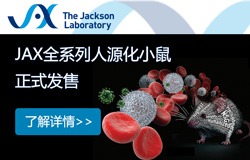Isolation of normal mammary epithelial cells
1. A small piece of tissue from each specimen was removed and minced.
2. The tissue was digested with collagenase overnight.
3. To remove the collagenase and the majority of the stromal cells, the tissue was rinsed and centrifuged.
4. The tissue was inoculated into a 60-mm tissue culture dish coated with collagen type I and grown in primary cell system supplemented with growth factors and hormones.
5. Prostatic stromal cells do not grow in the serum-free conditions used in this study, yet these conditions maintain the growth and differentiation of prostatic epithelial cells.
6. Morphological characteristics of the cultures used in the present study were consistent with the growth of epithelial cells.
7. The cells that grew out from the tissue were aliquoted and stored in liquid nitrogen.
8. The histology of each specimen was verified by inking and fixing the prostate after dissection and serially sectioning the marked area.
9. The histology of sections immediately adjacent to the area of the dissection was reviewed.
10. The frozen aliquots were thawed to produce secondary cultures, which were grown in primary cell system supplemented with growth factors and hormones.
11. Nomenclature for epithelial cell strains is “E” followed by the histology of origin (peripheral zone) and then the strain number.
12. Stromal cell cultures were established by inoculating collagenase-digested tissues into primary cell system with 10% fetal bovine serum and 100 μg/ml gentamicin in 60-mm tissue culture dishes.
13. Although epithelial cells attach in this medium, they do not grow well and are lost after the first passage.
14. Passaged cultures were aliquoted and stored frozen in liquid nitrogen until use.
15. Stromal cell cultures do not express keratin but express vimentin and fibronectin.
16. Nomenclature for stromal cell strains is“ F” followed by the histology of origin (peripheral zone) and then the strain number.
17. Strain numbers for stromal cells do not necessarily correlate with strain numbers for epithelial cells.
Reference
1. Peehl D. M. Culture of human prostatic epithelial cells Freshney I. A. eds. . Culture of Epithelial Cells, : 159-180, Wiley Liss, Inc New York 1992.
2. Kabalin J., Peehl D., Stamey T. Clonal growth of human prostatic epithelial cells is stimulated by fibroblasts. Prostate, 14: 251-263, 1989.
- 尚恩生物年終大促—4款細(xì)胞系套餐送500ml完全培養(yǎng)基
- 尚恩生物雙11促銷:任意細(xì)胞系+配套完培下單立減100
- 賽業(yè)今晚直播:點(diǎn)突變細(xì)胞株構(gòu)建策略及其研究應(yīng)用
- 賽業(yè)講座:兩步灌流法提取原代鼠肝臟Kupffer細(xì)胞
- 賽業(yè)生物課程預(yù)告:基因編輯細(xì)胞技術(shù)及其研究應(yīng)用
- 賽業(yè)生物明日開播:CAR-T細(xì)胞的結(jié)構(gòu)設(shè)計策略
- 尚恩生物細(xì)胞特價—30株細(xì)胞系限時890元/株
- 尚恩生物——胎牛血清、原代細(xì)胞福利大放送





